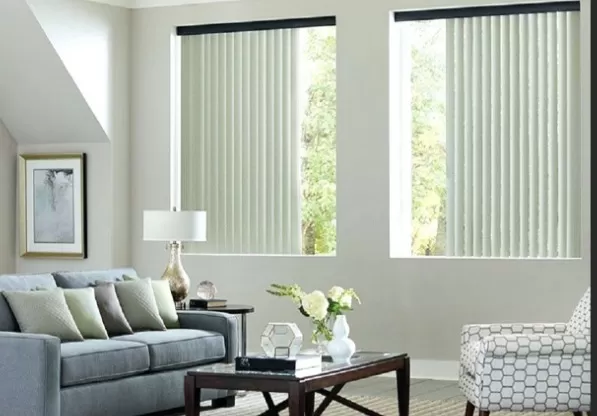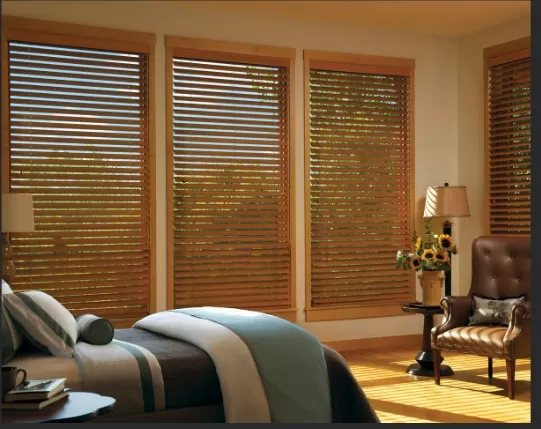Window Dressing Essentials: Types of Blinds for Every Home. Looking for New Window Treatments? Here’s an Overview of Common Blind Types to Simplify Your Search.
If you’re in the market for new window treatments, understanding the different types of blinds can help you narrow down your options. Here is a breakdown of the most common types of blinds to make your search easier:
Enhancing Light and Privacy Control with Vertical Window Blinds

Vertical window blinds not only provide a fashionable and user-friendly solution, but they also offer an effective means to manage the level of light and privacy in any space.
These blinds can be crafted from various materials such as fabric, vinyl, aluminum, or composite wood, granting you complete freedom to personalize the appearance and ambiance of your windows.
The slats of these blinds are suspended from a track positioned at the top of your window frame.
This particular design minimizes the accumulation of dust compared to other blind types, making maintenance a breeze as a simple wipe with a moist cloth is all that’s required.
Controlling Light with Venetian Blinds
For centuries, Venetian blinds have served as an appealing and efficient method to regulate the entry of light into a room.
These blinds are comprised of horizontal slats that can be adjusted by rotating them around their midpoint using either a pull chain or a cordless wand. This mechanism empowers users to fine-tune the amount of light that filters through the blinds while simultaneously enhancing privacy by obstructing external views. While traditional Venetian blinds were typically crafted from wood, contemporary variations can be made from materials such as aluminum, vinyl, and plastic. These versatile blinds are widely available at major home retailers specializing in window treatments.
Compact and Modern: Mini Blinds

Mini blinds closely resemble Venetian blinds with a few subtle distinctions.
Instead of wood or bamboo, mini blinds are commonly crafted from aluminum or vinyl, similar to Venetian blinds. However, mini blinds stand out with their narrower slats, typically not exceeding 1 inch in width.
While both types of blinds serve the same purpose, mini blinds exude a modern and contemporary aesthetic due to their sleeker design.
Elevate Your Windows with Wood Blinds
Wood blinds are a favored option for individuals seeking to infuse a touch of opulence into their window treatments.
These blinds offer a natural and enduring appearance that transcends trends. In addition to exuding sophistication and Timeless Elegance, wood blinds are remarkably sturdy and can withstand the test of time with proper care and maintenance. They can be customized to match any color scheme through painting or staining, while various slat sizes cater to the specific preferences of shoppers. While horizontal or Venetian-style wood blinds are more common, vertical wooden blinds are also available to fulfill diverse design needs.
Affordable Elegance: Aluminum Blinds

Aluminum blinds have gained immense popularity as one of the most sought-after window blind options, thanks to their affordable price and lightweight yet durable construction.
Their easy installation and remarkable longevity make them a preferred choice. These blinds boast a sleek and contemporary appearance that can effortlessly complement various interior decor styles.
With a wide range of colors, sizes, and textures available, homeowners can customize their windows to align with any desired aesthetic. Moreover, aluminum blinds contribute to energy efficiency by deflecting the sun’s rays away from the window, helping to keep the interior cooler.
This reduction in heat transfer assists in minimizing air conditioning costs, as less energy is required to maintain consistent indoor temperatures.
*The information is for reference only.